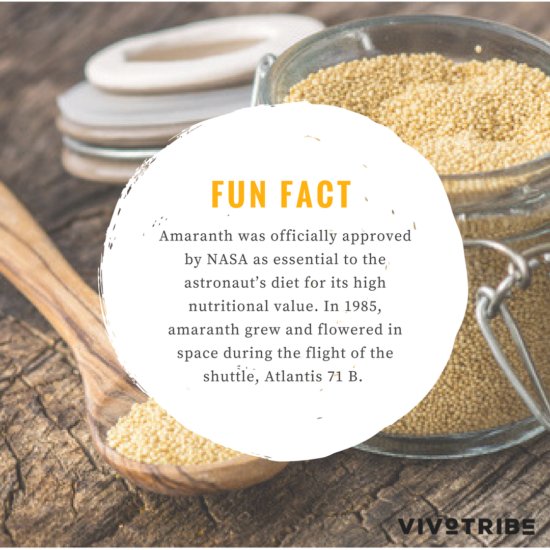Amaranth has since surged in popularity in places all over the world, particularly Latin and South America.
Kale, acai, goji berries–we’ve heard of a ton of superfoods over the years and each one seems to have had their 15 minutes of fame. But, let’s get right down to it. There’s a new, or really really old in fact, superfood in town and we think it’s here to stay.
Amaranth. It’s a tiny, ancient seed that grows on pretty reddish pink plants. It was harvested thousands of years ago by tribes like the Incas, who called it “kiwicha”–which is just super fun to say. Even back then it was known to Incas and Aztecs as a superfood and was a prime staple in their diet.
Amaranth has since surged in popularity in places all over the world, particularly Latin and South America. However, it’s been sadly rejected by American farmers over the years and was considered a weed before word got out that it was actually incredibly healthy and jam packed with nutrients. Yep, this little underdog is high in protein and essential amino acids making it a great plant-based protein for vegetarian and vegan diets.
What are amaranth’s superpowers?
We thought you’d never ask. Studies have linked amaranth oil to benefits for those with hypertension and cardiovascular disease. It’s known to also reduce those pesky blood pressure and cholesterol levels (Move over, Cheerios). Amaranth contains a ton of vitamins and minerals, and oh yeah, turns back time. Okay maybe not really–but it is considered an anti-aging food because of its cumulative anti-carcinogenic, anti-hypertensive, anti-oxidant, and anti-lipidemic properties.

As an ingredient in food and snacks, amaranth is also pretty magical. It can be cooked and added to breads or even popped like popcorn. The best part? Amaranth seeds can be ground into flour for the ultimate base to crunchy, delicious, salty eats (our favorite). As a bonus, it’s gluten free and makes a great replacement for wheat flour.
If you aren’t yet convinced that amaranth is truly an ancient yet up and coming superfood, get this. Amaranth has been grown in space. Yes, you read that right. In space.
Amaranth was officially approved by NASA as essential to the astronaut’s diet for its high nutritional value. In 1985, amaranth grew and flowered in space during the flight of the shuttle, Atlantis 71 B.
For us, amaranth is both past and future and we can’t wait for you to see what we’re creating with it. As a core ingredient in VIVOTRIBE products, we couldn’t be more proud of this little seed. We invite you to share your thoughts, ideas, and recipes with us. Have you cooked with amaranth before? Let us know! And stay tuned for more from VIVOTRIBE.

